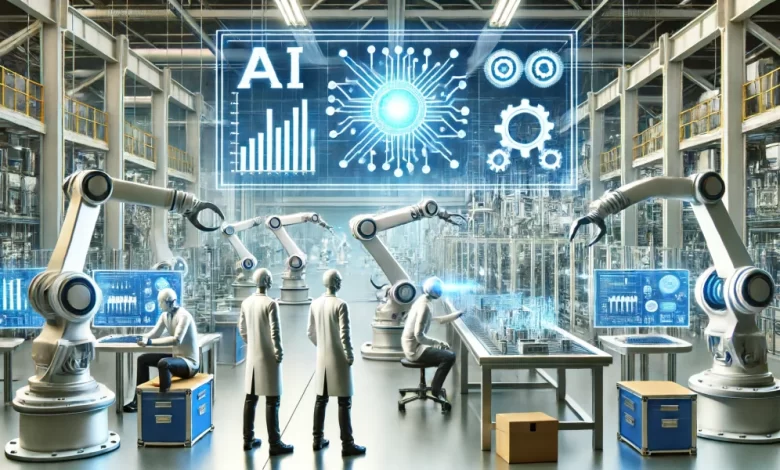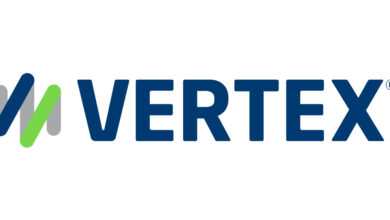AI in Manufacturing: Overcoming Data and Talent Barriers

Artificial Intelligence (AI) is increasingly becoming the foundation of modern manufacturing with unprecedented efficiency and innovation. Imagine production lines that adjust themselves in real time, machinery that predicts its own maintenance needs, and systems that streamline every aspect of the supply chain. This is not any futuristic anticipation. Rather, it is happening now, driven by AI technologies reshaping the manufacturing domain.
However, integrating AI into manufacturing presents several challenges. Two of the most significant challenges are the availability of high-quality data and the need for more skilled talent. Even the most advanced AI models can fail without accurate and comprehensive data. Additionally, deploying and maintaining AI systems requires a workforce skilled in both manufacturing and AI technologies.
Why are these challenges so crucial? The implications are significant. Manufacturers that overcome these barriers can gain a substantial competitive edge. They can expect increased productivity, substantial cost reductions, and enhanced innovation. Conversely, those who fail to address these challenges may stay caught up in an increasingly competitive market, facing missed opportunities, inefficiencies, and operational obstructions.
Data Deluge in Manufacturing
The manufacturing industry is experiencing a data revolution driven by the information flood from sensors, IoT devices, and interconnected machinery. This data provides insights into production processes, from equipment performance to product quality. However, managing this vast influx of data is a major challenge. The huge volume strains storage capacities and complicates processing and analysis efforts, often overwhelming traditional systems.
Even with an abundance of data, maintaining its quality is essential. High-quality data, characterized by accuracy, consistency, and relevance, is necessary for AI models to make reliable predictions and decisions. Unfortunately, many manufacturers face issues with data that is incomplete, inconsistent, or noisy, which undermines the effectiveness of their AI applications. The saying “garbage in, garbage out” is true for AI. Without clean and reliable data, even advanced AI systems can fail.
Additionally, data silos present another challenge. Manufacturing data is often fragmented across various departments and legacy systems, making obtaining a comprehensive view of operations difficult. This fragmentation hinders effective AI implementation. Bridging these silos to create a unified data environment requires significant effort and investment, often requiring overhauls of existing IT infrastructure and processes.
Furthermore, as manufacturing systems become more interconnected, ensuring data privacy and security is increasingly critical. The rise of cyber threats poses substantial risks to sensitive production data, potentially leading to severe operational disruptions. Therefore, balancing data accessibility with robust security measures is essential. Manufacturers must adopt strict cybersecurity practices to protect their data while adhering to regulatory requirements, maintaining trust, and safeguarding their operations.
Data Quality and Preprocessing
The effectiveness of AI applications in manufacturing heavily depends on the quality of the data fed into the models. One of the foundational tasks in preparing data is data cleaning and standardization. Cleaning involves removing inaccuracies, handling missing values, and eliminating inconsistencies that can skew results. Standardization ensures that data from various sources is uniform and compatible, allowing seamless integration and analysis across different systems.
Another critical aspect is feature engineering, which transforms raw data into meaningful features that enhance the performance of AI models. This process involves selecting relevant variables, modifying them to highlight important patterns, or creating new features that provide valuable insights. Effective feature engineering can significantly boost the predictive power of AI models, making them more accurate and reliable.
Anomaly detection is also essential for maintaining data quality. By identifying outliers and unusual patterns, manufacturers can address potential unnoticed errors or issues. Anomalies can indicate problems in the data collection process or reveal important trends that require further investigation, ensuring the reliability and accuracy of AI predictions.
Data labeling plays a vital role, especially for supervised learning models that require labeled examples to learn from. This process involves annotating data with relevant tags or labels, which can be time-consuming but essential for effectively training AI models. Labeled data provides the necessary context for AI systems to understand and predict outcomes accurately, making it a cornerstone of effective AI deployment.
Talent Shortage in Manufacturing AI
The adoption of AI in manufacturing faces significant hurdles due to a shortage of skilled professionals. Finding experts with a deep understanding of AI and practical knowledge of manufacturing processes is challenging. Many manufacturers struggle to recruit talent with the necessary skills in AI, machine learning, and data science, creating a skills gap that slows down AI implementation.
Key roles in manufacturing AI include data scientists, machine learning engineers, and domain specialists. Data scientists analyze and interpret complex data; machine learning engineers develop and deploy AI models, and domain specialists ensure AI solutions are relevant to manufacturing challenges. The combination of these roles is vital for successful AI integration.
However, competition for this talent is intense, especially from large tech companies that offer attractive salaries and benefits. This makes it difficult for smaller manufacturing firms to attract and retain skilled professionals.
Strategies for Overcoming Talent Barriers
Addressing the AI talent gap in manufacturing requires a multifaceted approach. One effective strategy is to invest in upskilling the existing workforce. Manufacturers can equip their employees with essential skills by offering training programs, workshops, and certifications in AI and related technologies. Providing opportunities for continuous learning and professional development also helps retain talent and fosters a culture of continuous improvement.
Collaborations with academic institutions are imperative in bridging the gap between industry and education. Manufacturers can partner with universities to design AI-specific curricula, offer internships, and engage in joint research projects. These partnerships provide students with practical experience, create a pipeline of skilled professionals, and promote innovation through collaborative research.
Benefitting from external expertise is another effective strategy. Outsourcing AI projects to specialized firms and utilizing external experts can provide access to advanced technologies and skilled professionals without extensive in-house expertise.
Crowdsourcing talent through platforms like Kaggle allows manufacturers to solve specific AI challenges and gain insights from a global pool of data scientists and machine learning experts. Collaborating with AI consultancies and technology providers helps manufacturers implement AI solutions efficiently, allowing them to focus on their core competencies.
AI in Manufacturing Real-world Examples
Several leading manufacturing companies are benefitting from AI. For example, General Electric (GE) has successfully implemented AI-driven predictive maintenance, analyzing sensor data from equipment to predict potential failures before they occur. This proactive approach has significantly reduced equipment downtime and maintenance costs, improving operational efficiency and extending machinery lifespan.
Similarly, Bosch used AI for demand forecasting, inventory management, and quality control. By optimizing inventory levels, Bosch reduced costs and improved order fulfillment. Quality control has also seen significant advancements through AI. Likewise, Siemens employed AI-powered computer vision systems for real-time quality control in its assembly lines. This technology detects defects immediately, ensuring consistent product quality and reducing waste, leading to a 15% increase in production efficiency.
The Bottom Line
In conclusion, integrating AI in manufacturing transforms the industry, turning futuristic concepts into present-day realities. Overcoming data and talent barriers is important for fully utilizing AI’s transformative potential. Manufacturers who invest in high-quality data practices, upskill their workforce, and collaborate with academic institutions and external experts can achieve unmatched efficiency, innovation, and competitiveness. Embracing AI technology enables manufacturers to drive productivity and operational excellence, paving the way for a new era in manufacturing.




